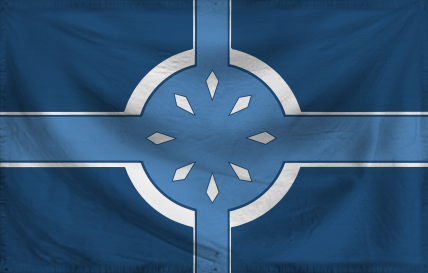
"Freedom, Firepower, Altitude" -- An unofficial Front Range motto.
The Front Range Republic of Mount Shavano is a rugged, devout nation, located on the continent of Laurasia. She is led by President William Cloud and the thirty-nine members of the Senate, and notable for the beautiful, sprawling vistas of her snow-capped mountains. Her hard-nosed, hard-working, intelligent population of 150 million are blessed with a plethora of personal and economic freedoms, while the political process is open and the people's right to vote held sacrosanct.
The small, hawkish government devotes most of its attention to the military and foreign policy, with areas such as public education and social welfare receiving almost no funds by comparison. It meets every day to discuss matters of state in the glittering capital city of San Angelo. Citizens pay a flat income tax of 10%, although religious tithes are tax deductible. A powerhouse of a private sector is led by the defense industry, followed by arms manufacturing, information technology, and automobile manufacturing.
The Front Range Republic is well known for her interventionist military stance, freedom of information is long standing Constitutional policy, the nation's Air Force is both respected and feared, and the right to bear arms is defended fanatically. Crime -- especially youth-related -- is crippling. The Front Range Republic's national animal is the trike, which roams free across the nation's wide plains, her national religion is the Christian faith, her national anthem is "Rocky Mountain High", and her currency is the angel.
National Summary
Statistics and Information
History
Politics
Geography
Technology
Economy
Military*
Culture*
Miscellaneous Information**
Embassies
*Major work still to be done.
**Includes or will include NS related art, Front Range symbolism, and links to noteworthy threads or posts.


















































































